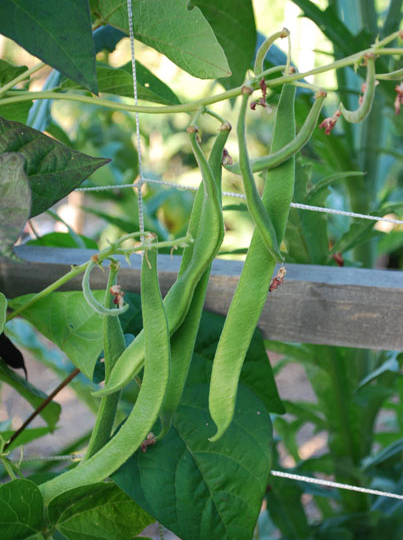
Climbing Beans II
Lead Organization:
Ministry of Agriculture -Malawi
Partner Organizations:
Centro Internacional de Agricultura Tropical, Agricultural Research Institute - Uyole, Instituto de Investigacao Agraria de Mocambique
Community of Practice:
Countries:
Mozambique, Tanzania, and Malawi
Duration:
2/2011—2/2014
Overview:
The common bean is an important source of vegetable protein for farmers in sub-humid Malawi, Mozambique and Tanzania, is also a source of cash and is known to improve soil health. CIAT has introduced climbing bean germplasm that is adapted to medium altitude environments of southern Africa with relatively short growing periods, typical of the Blantyre Shire Highlands in Malawi, border areas into Mozambique and the southern Highlands of Tanzania. CIAT estimates that new climbing bean varieties would offer farmers higher yield usually ranging from 2 – 3 times that of the dwarf beans common to these areas. CCRP-funded work by the Department of Agricultural Research Services (DARS), CIAT and NGOs in Malawi and Mozambique from 2006 to 2010 demonstrated that climbing beans can be productive at medium and high altitudes but suffered from drought and a virus disease (BCMV) in dry years. To develop the potential of climbing beans, a second phase of this project is now focusing on developing models that will enable land- and labor-constrained growers to integrate climbing beans into the existing maize-based system without the need to use staking systems that are expensive in resource use. Inter-cropping will be tested in the summer rains and sole crops will also be evaluated on irrigated plots in valley bottoms where high value winter crops are grown. Work will also be undertaken to select virus-resistant lines using climbing bean lines bred by CIAT that are now available for testing in Africa. Using lessons from the CCRP Bean Seed System project, mechanisms to facilitate growers’ access to quality seed will be demonstrated on a local scale. The project team includes staff from national programs in Mozambique and southern Tanzania working in areas that CIAT have identified as suitable for the production of climbing beans. NGOs and district extension staff will also collaborate to evaluate climbing bean production systems, supply seed and promote the crop on a local pilot scale.
Grant Aims:
To identify or develop climbing bean varieties resistant to BCMV while maintaining traits preferred by farmersTo widely test with farmers BCMV resistant climbing bean varieties for adaptation in various bean production environments and promote for adoptionTo identify varieties which are compatible in intercropping systems with maize/pigeon peas and derive a recommendation domain for their agronomic practicesDevelop a model of “Best Fit” of new climbing beans in the existing smallholder farming systems
Outputs and Outcomes:
Resistance to common bean mosaic virus has been successfully introgressed into improved large-seeded lines of climbing bean using the bc3 gene. Selected lines have shown good resistance to BCMV in on-station and on-farm trials in Malawi, Mozambique and Tanzania. In on-farm trials conducted at nine sites in Mozambique one line, CIM-CLIMB 1081-1-1-1, yielded 3.2 t/ha-1 compared to a yield of 2.3 t/ha-1 for the local check Kazama.